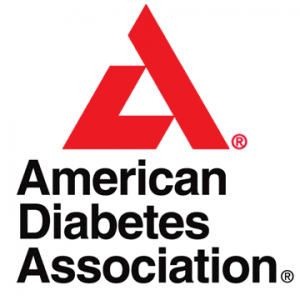November 14, 2016

According to the American Heart Association, adult women’s recommended sugar intake is 5 teaspoons (20 grams) per day, adult men’s recommended sugar intake is 9 teaspoons (36 grams), and children’s recommended sugar intake is 3 teaspoons (12 grams).
To put that in perspective, a can of diet soda alone can have as many as 40 grams, or about 10 teaspoons of sugar. “Our target recommendation is the same for all children between the ages of 2 and 18, to keep it simple for parents and public health advocates,” stated lead author Dr. Miriam Vos in a heart association news release. Added sugars are any sugars, including table sugar, fructose and honey, used in processing and preparing foods or beverages, added to foods at the table, or eaten separately.
The World Health Organization (WHO) published guidelines on sugar recommending it be less than 10 percent of our total daily energy intake. It further suggested that a reduction to below 5 per cent would have added health benefits; this is equivalent to about 25g (six teaspoons) of sugar per day for an adult of normal body mass index.

Added sugar is hidden in all kinds of processed foods. A single tablespoon of ketchup has about one teaspoon of sugar. A Quaker chewy granola bar with chocolate chips has almost two teaspoons of sugar. A single cup of apple juice would take up your entire recommended daily allowance.
Regular consumption of foods and drinks high in added sugars can lead to high blood pressure, obesity and diabetes, which increase the risk of heart disease. “Children who eat foods loaded with added sugars tend to eat fewer healthy foods, such as fruits, vegetables, whole grains and low-fat dairy products that are good for their heart health,” Vos noted.
“There has been a lack of clarity and consensus regarding how much added sugar is considered safe for children, so sugars remain a commonly added ingredient in foods and drinks, and overall consumption by children remains high – the typical American child consumes about triple the recommended amount of added sugars,” she said.

About 208,000 Americans under age 20 are estimated to have diagnosed diabetes, approximately 0.25% of that population. In 2008—2009, the annual incidence of diagnosed diabetes in youth was estimated at 18,436 with type 1 diabetes, 5,089 with type 2 diabetes.
We can do a lot to determine the health and wellness of our children by helping them make better choices about sugar every day. Since most of the sugar consumption is happening at home, simply not buying soda, fruit juice and other sugary snacks can go a long way to eliminating sugar consumption in our children.
Starting in July 2018, food products sold in the United States will have to list the amount of added sugars on the Nutrition Facts Panel. Until then, the best way to avoid added sugars in your child’s diet is to serve mostly foods that are high in nutrition, such as fruits, vegetables, whole grains, low-fat dairy products, lean meat, poultry and fish, and to limit foods with little nutritional value.
Action in Our Community


Take Note
Healthy eating starts with paying attention to what you eat. Take note of the ingredients in your food, and of how much sugar becomes part of your diet. Think about the American Diabetes Association’s “STAR” to help make smart choices:
- STOP before you make a decision. What kind of snack is best to choose? Is it better to go for a walk or watch TV?
- THINK about your choices before you act. How will they affect you and your health? For example, a piece a fruit will affect your blood sugar level differently than a bag of chips.
- ACT on the better choice for your health. Remember, change is slow. No one expects you to always choose the healthier option. Small steps add up to big results!
- REFLECT on your progress. Give yourself credit when you make a healthy choice. If you choose the bag of chips, think about what you can do to make up for your extra calories. How can you make a different decision next time?
Over time, it gets easier to make healthy choices. Try to make healthy changes as a family or a group. Review your progress together and support success. Be careful to not exceed the recommended daily intake of 25 grams of sugar to keep your body advancing towards health and wellness.
Related News

Jul 5, 2023
2024 Mission Support-open
Open Request for Grant Applications: 2024 Mission Support APPLY HERE [...]
Sep 26, 2017
Food Insecurity a Real Problem in San Diego and Imperial Counties
Having just written about obesity fueling the epidemic of prediabetes [...]
Aug 30, 2017
Majority of Californians Are Prediabetic or Diabetic: What Do We Do?
According to a 2016 UCLA study, the majority of adults [...]

